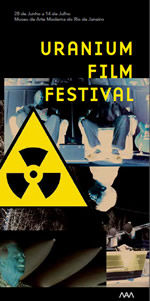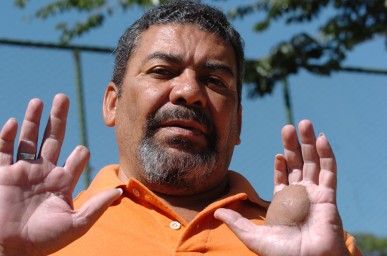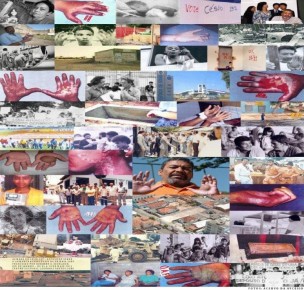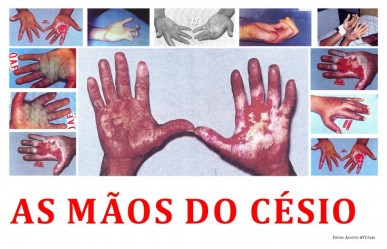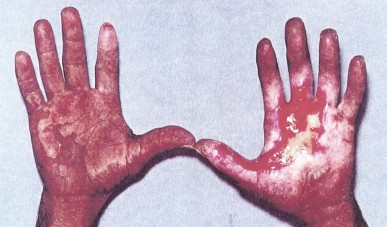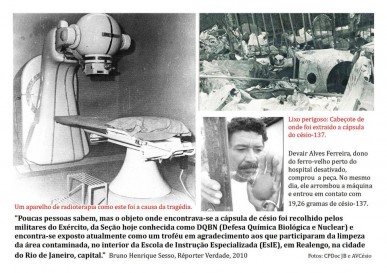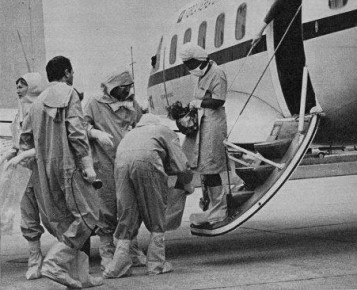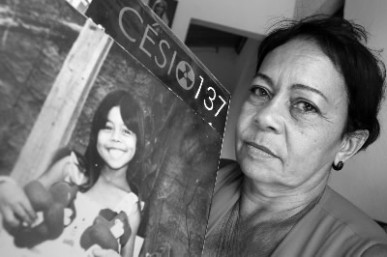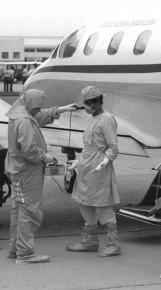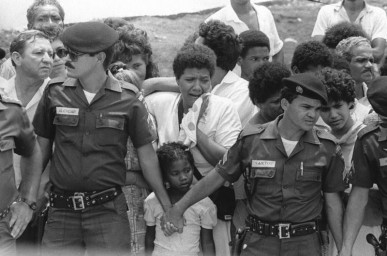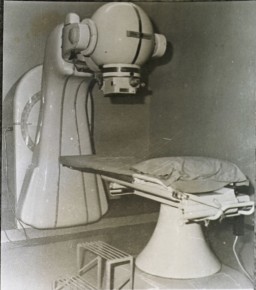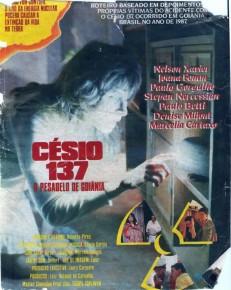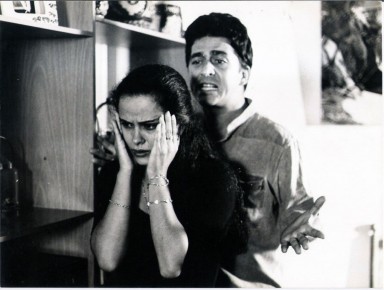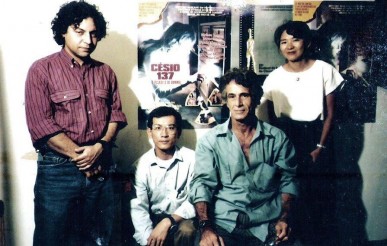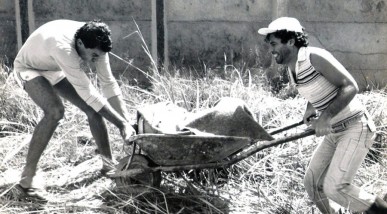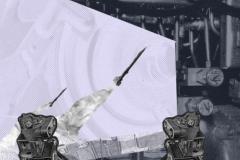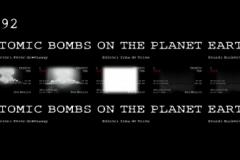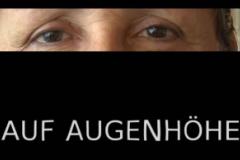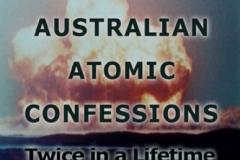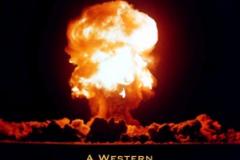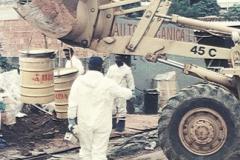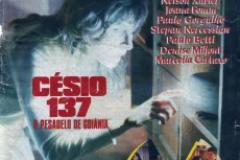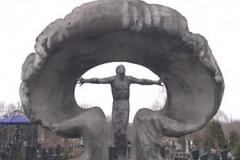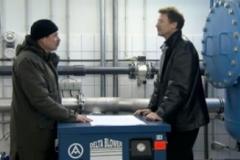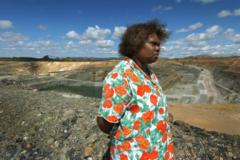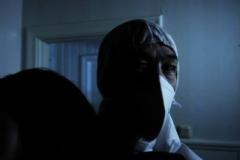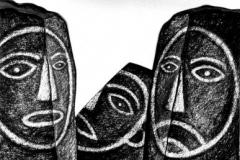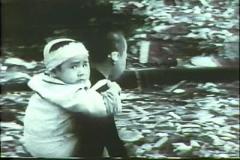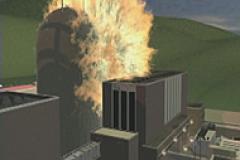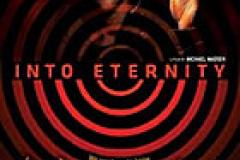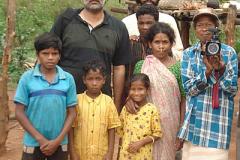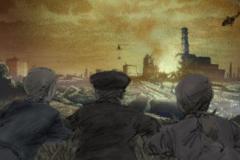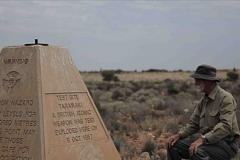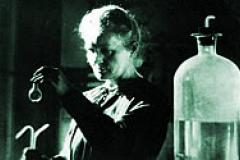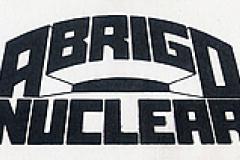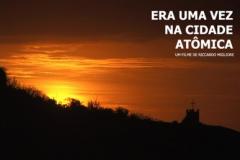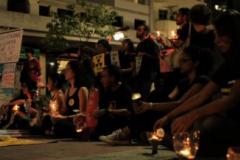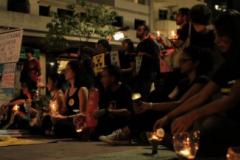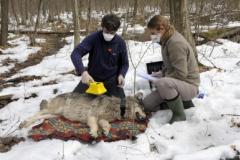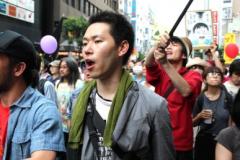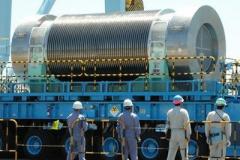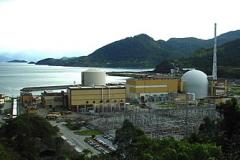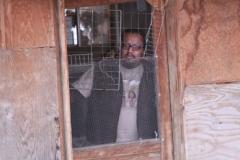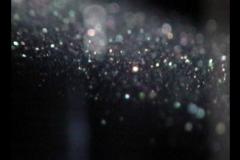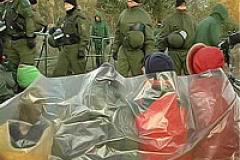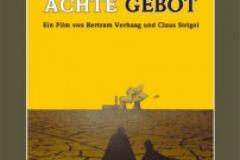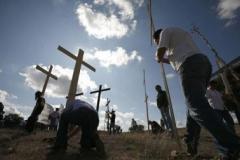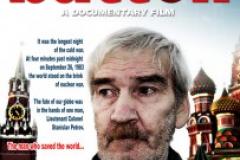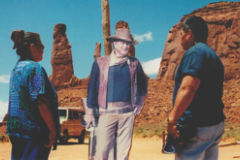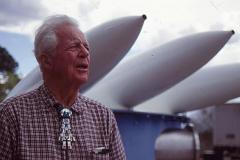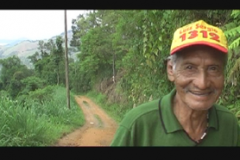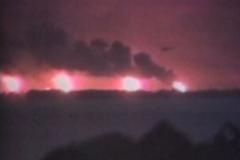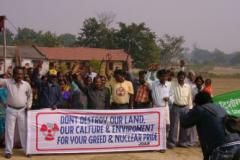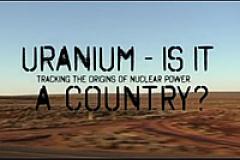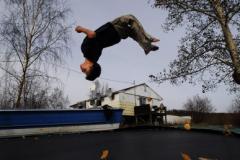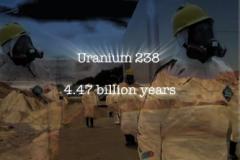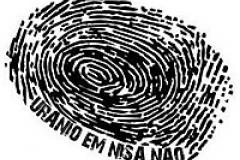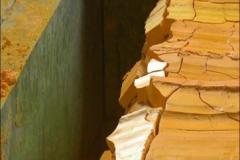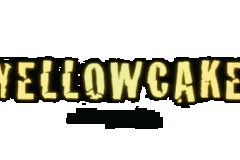FESTIVAL PROGRAMM
RIO DE JANEIRO 2012
MODERN ART MUSEUM (PDF)
YELLOW OSCARS 2012 FOR FILMS FROM GERMANY, SWEDEN & USA
The 2nd International Uranium Film Festival of Rio de Janeiro 2012 awarded the best films of the festival. Three films from USA, Sweden and Germany were honoured with the festival’s "Yellow Oscar". Bill Keisling's "Not for Public Release: a Nuclear Incident in Lock Haven", USA, received the Best Feature Award, and Swedish Filmmaker Marko Kattilakoski received the Short film Award for his movie Coffee Break (Fikapaus). "Leonids Story" by German film director Rainer Ludwigs and Ukrainian producer Tetyana Chernyavska got the Yellow Oscar in the animated film category. Watch here the video statements by Bill Keisling and Marko Kattilakoski.
A special recognition was made for Peter Greenaway’s extraordinary shortfilm "Atomic Bombs on the Planet Earth". That outstanding experimental documentary, that shows the insanity of over 2200 atomic bombs dropped on the planet Earth between 1945 and 1989 was honoured with the special recognition “Hors Concours”. “Peter Greenaway, a multi-artist with more that 70 films produced, is in a category in his own”, said Uranium Film Festival Judge João Luiz Leocádio, nuclear engineer and professor for cinema at Niteroi’s Univercity UFF (Universidade Federal Fluminense). The Festival screened more than 50 films.
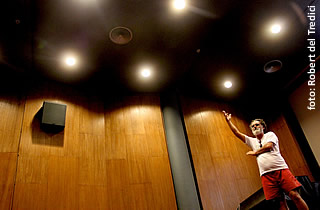
Filmmaker Ângelo José do Rego da Cunha Lima presented his short film Amarelinha during
the Uranium Film Festival in the cinema of the Modern Art Museum,
MAM Rio de Janeiro.In October 2012he also attended the Uranium Film Festival
in Berlin together with the Brazilian film directors Laura Pires and Luiz Eduardo Jorge.
“HANDS OF CAESIUM” - PHOTO EXHIBITION ABOUT BRAZIL´S CAESIUM-137 ACCIDENT AT RIO+20
Maõs de Césio / Hands of Caesium", is a photo exhibition about the nuclear accident that happend September 1987 in the City of Goiânia with the radioactive element Caesium-137. It was the worst radioactive accident of Latin America.
Two scrap metal dealers found an old radiotherapy unit in an abandoned cancer hospital. They did not know that this machine was radioactive and contained highly dangerous Caesium-137, so they broke it into pieces and the deadly accident happened.
Thousands of people got contaminated. About 80 people died until today from the radioactive contamination, according to the association of the caesium-137 victims. Until today, many of the surviving victims are not compensated by the state and are in need of help. After Goiânia similar accidents happend in other countries: 2000 in Malaysia and 2010 in India.
The Yellow Archives created this exhibition 2011. And we showed it May 2011 in Rio de Janeiro and later in diffrent cities of Northeast Brazil.
In June 2012 we present the exhibition during the "alternative" Rio+20-Events.
We thank the Association of the Ceasium-Victims AVCésio, the documentary centre of the Journal JB (Jornal Brasil CPdoc JB) and the Foundation Roberto Pires for supporting the exhibition by providing photos and information.
At the moment, the exhibition is available in Portuguese, but we plan to translate it into English, so that it can be shown in other countries. We appreciate your support and donation!
PRESS REPORTS ABOUT THE EXHIBITION
- Exposição sobre maior acidente nuclear do Brasil abre neste domingo - Jornal do Brasil
- ‘Mãos de Césio’ agora em suas mãos – Exposição sobre acidente nuclear de Goiânia ‘on Tour’ - Ecodebate
- Mãos de césio: os trabalhadores por trás da tragédia - Ciência Hoje
- Rio de Janeiro vai sediar exposição que lembra acidente com o césio 137 - O Globo
- Exposição sobre maior acidente nuclear do Brasil abre neste domingo - Jornal do Brasil
- Fotoausstellung "Mãos de Césio" über Strahlenunfall in Brasilien - KoBra
- Fotoausstellung zu Nuklearunfall in Brasilien - FotoIntern
PROGRAM
Argentine/Brazil, 2012, 106 min, Portuguese with English subtitles
Production: O Movimento Falso Filmes
Documentary
The Hibakusha of Brazil. August 6, 1945, at quarter past eight in the morning the USA are dropping the first atomic bomb on the civilian population of the city of Hiroshima. This documentary chronicles the lives of survivors of Hiroshima who are now living in Brazil.came to live in Brazil...
USA, 2011, 6 min, English
Animation/Experimental
Producer: Nathan Meltz
Latin American Premiere
The film remakes a section of the 1983 post-nuclear made-for- TV movie 'The Day After', retelling the story of atomic devastation in a Dada collage-meets-stop-animation style. The film showed atomic bombs reducing humans and animals to skeletons, and a city was blown to rubble.
Brazil, 2002, 4 min, Portuguese
Fiction
One of the first victims of the radioactive accident of Goiânia with Cesium-137 September 1987 was a 6 year old child. Leide das Neves had no time to play.
UK/The Netherlands | 2011 | 13 min | Art & Experimental documentary
Director: Peter Greenaway, Video Design Irma de Vries
Producer: Change Performing Arts www.changeperformingarts.com | Language: Multilingual
Synopsis: Very surprisingly from 1945 to 1989 there have been 2201 atomic bombs dropped on the planet Earth - an astonishing number of atomic bombs implying huge destruction and fall-out. The film shows evidence of every bomb explosion documented with the nation responsible, the date and location, the force and the height about earth or sea level in a relentless build up of accumulating destruction that is both inspiring and dreadful in the true biblical sense of the phrase - full of dread.
Video: https://www.youtube.com/watch?v=Mc3EKAszRAw
Awards: International Uranium Film Festival Hors Concours Award, Rio de Janeiro 2012
Germany, 2010, 11 min, German/Portuguese subtitle
Production: Strahlendes Klima
Latin American Premiere
It is a short film about uranium mining and environmental racism in Niger, Namibia and the United States of America.
www.strahlendesklima.de/augenhoehe/
Australia, 2005, 49 min, English and Aboriginal Australian
Documentary
Latin American Premiere
Sacrificial lambs to the slaughter. Eyewitnesses tell the true story of what happend during the 12 British atomic bomb tests in Australia. The film is a chilling expose of nuclear testing and the demaging legacy that continues these day.
Germany, 2011, 5 min
Animation, no dialog
Production: Franka Sachse, Uli Seis, Bauhaus-University Weimar
Latin America Premiere
A firefly falls in love with the most shiny thing he knows, the sun.
Fireflies are so romantic, aren't they? And if it is the last thing they do...
Spain, 2010, 12 min
Animation
Producer: Abrakam Estudio
A terrible industrial accident changes DINKI's life forever. Now DINKI's fate may ride on the wings of her eccentric friend BIRDBOY, a misfit who hides in the Dead Forest, lost in his fantasies...
Australia, 2005, 62 min, English
Production: Frontline Film Foundation
Documentary
Latin American Premiere
Blowin' in the Wind examines the secret treaty that allows the US military to train and test its weaponry on Australian soil. It looks at the impact of recycled uranium weapons and the far-reaching physical and moral effects on every Australian. The film's release has been timely as the government currently moves to approve more uranium mines while arguing the contrary - that by going nuclear we are being both 'safe' and 'green'. The film reveals that Iraqi babies are now being born with major birth defects. Bradbury wonders whether Australians living downwind from the military testing ranges will be next. He argues that we were lied to by the British over the Woomera and Maralinga atomic tests. Can we trust another equally powerful partner in our 'war on terror'?
With a cash budget of just $12,000 the film raises pertinent questions which cannot be ignored by the Australian public. The film shocked, angered and surprised large audiences when shown at the Sydney and Brisbane Film Festivals.
www.frontlinefilms.com.au/videos/blowin.htm
USA, 2006, 6 min, English
Animation
Latin America Premiere
An experimental "Western" environmental expose on the burial of 17,500,000 cubic feet of radioactive and other toxic waste disposed of during the Cold War by Los Alamos National Labs, in unlined pits in the Earth. This radioactive waste has contaminated groundwater, and deep aquifer water, affecting indigenous communities and surrounding land.
South-Africa, 2009, 50 min, English & Africaans
Latin American Premiere
Inspired by a dream of nuclear waste as a malignant tumour in the earths skin a woman journalist sets off on a road trip. She follows the route taken by the trucks carrying nuclear waste from the nuclear power plant in Cape Town to their destination in the pristine semi-desert region of Namaqualand. There she meets men and women of the Nama-Khoi tribe, who live in the area, and listens to their untold stories. Over 8 years, her investigation leads her to the homes of other communities living and working in close proximity to nuclear facilities - from nuclear fuel manufacturing plants to nuclear waste dumps and future nuclear power plant sites. Buried in Earthskin subtly demonstrates how energy and political power go hand in hand, and gives a voice to marginalized indigenous peoples who have paid the ultimate price for decisions made (about where we get our electric power) for the sake of political and financial power.
(Césio 137 – O Brilho da Morte)
Brazil, 2003, 24 min
Director: Luiz Eduardo Jorge, Producer: Laura Pires
AUDIENCE AWARD BEST SHORT FILM 2011
That Brazilian short film shows the events of a real live tragedy about the release of radioactive Caesium-137 into a populated area in 1987 in the city of Goiânia, Brazil. It was the worst radioactive accident in Latin America, which cost the lives of many people and the health of hundreds or possibly thousands of survivors.
15 years of pain, fear, panic and doubt. Discrimination, segregation and death of victims of one of the world's largest radiological accident, with irreversible damage to people and environment. The screenplay is based on testimonies of the victims.
Brazil, 1989, 95 min, Portuguese, English subtitles
Producer: Laura Pires
Doc Fiction
AUDIENCE AWARD BEST FEATURE FILM 2011
In the ruins of a demolished hospital for cancer treatment in the centre of the Brazilian city Goiânia, two young men found an old "forgotten" Teletherapy Unit, which contained a highly radioactive "Caesium 137 bomb". They sold it to a local scrap metal dealer, who opened that Pandora's box. People were fascinated by the dazzling blue light of the caesium crystals. But they did not know, that it was the shine of the death. Hundreds if not thousands of the citizens and visitors of Goiânia became victims of Caesium 137. The script of the movie is based on statements by the victims and medical personal attending the victims, taken by Roberto Pires at the time of the accident.
(Verstrahlt und vergessen, Tschernobyl und die Folgen)
Germany, 2006, 59 min, German/ Russian, English Subtitle
Production: ARTE – WDR
Brazilian Premiere
April 26th 1986. The day a nightmare scenario became horrific reality: the day reactor block 4 of the Chernobyl atomic power station exploded. While researching and filming this project filmmaker Christoph Boekel met numerous victims of the atomic catastrophe. His own wife was one them and she, too, died of cancer. A moving film told from the personal perspective of the director, it is a requiem for the often forgotten victims of the disaster and a caveat against putting blind trust in technological advancement.
(Gefährliches Trinkwasser)
Germany, 2010, 44 min, German
Director: Dethlev Cordts, Production: Dethlev Cordts for NDR German TV
Latin American Premiere
From 1951 to 2005 at least 13,000 tonnes of uranium have been proposed on German fields. Phosphate fertilizers were dirtied with an average of half a pound of uranium per tonne. The confederation of industries agrarian and the farm association do not take a serious view on that. The natural uranium deposits in our grounds are much higher, than the additional load by the fertilization. Besides, they hide that the so-called "natural uranium" is already integrated since millenniums firmly in the crystalline structures of the rock, the uranium from the fertilizer, however, is very slightly water-disolvable and movable and can reach very fast in the drinking water leaders. In an exciting trace search author Dethlev Cordts is looking for the springs of the uranium coming along in the drinking water.
Australia, 1980-2011, 51 min
English/Gunwinku, English Subtitles
Uranium mining was imposed on the Traditional Owners of Kakadu, Australia in the late 1970s and the controversial Ranger mine commenced production in 1981. Three decades later Kakadu uranium is still shipped out of Darwin to fuel nuclear reactors in Japan, Europe and elsewhere.
The film includes rare footage of Mirarr Senior Traditional Owner Toby Gangale stating clear opposition to mining on his country and documents his prescient concerns about uranium. It shows how the Federal Government overrode the human rights of Kakadu's Traditional Owners in order to impose a toxic industry in a World Heritage Area. The film provides a unique insight into a story that continues to generate heartache and headlines today.
Sweden, 2011, 14 min 30, Swedish/English Subtitle
Latin American and Indian Premiere
Yellow Oscar Best Short Film 2012
During a coffee break two men, wearing protective suits, are having a conversation about Chernobyl, Harrisburg, Forsmark and nuclear meltdowns.
Back at work their lack of empathy makes them true professionals.
And someone else becomes a victim. Coffee Break is a comedy-thriller.
USA, 2012, 18 min, Japanese/English, English subtitles
Producer: Yoko Kumano
Documentary
World Premiere
The film addresses the isue of radiation in food after the March 11, 2011, Fukushima desaster. The film features interviews with food producers, restaurant owners and new parents about the food consumption has changed after the nuclear accident and the contamination of the food chain with radioactive elements.
USA | 1997 | 9 min | Animation
Director: Karen AQUA (1954 - May 30th, 2011) | Music by Ken Field
Language: No Dialogue
Synopsis: In south-central New Mexico, an ancient Native American rock art site lies 35 miles from the detonation site of the world’s first atomic bomb. The juxtaposition of these sites points to the striking contrast between the two worlds which created them: one which reveres and lives in harmony with the natural world, and one which, in striving to control the forces of nature, has created a means for its destruction. Film director's website: http://karenaqua.com
Awards:
Humboldt International Film Festival, CA, 1998: 1st Prize, Animation
Marin County National Festival of Short Films, CA, 1998: 1st Prize, Animation
Green Extreme Film Festival, Canada, 1999: Best Environmental Film
Prix Leonardo, Italy, 1999: Gold Certificate
International Uranium Film Festival SPECIAL ACHIEVEMENT AWARD 2012
Japan, 1990, 30 min, Portuguese
A film of Hiroshima Peace Memorial Museum
A documentary film featuring footage captured immediately after the blast, it calls for the abolition of nuclear weapons and world peace from the viewpoint of a mother in Hiroshima.
USA, 2003, 29 min, English
Documentary
Latin American Premiere
Shows the impossibility of evacuation at Indian Point nuclear power plant outside NY City. Produced after the 9/11 terror attack on New York City and the terrorists announced they had targeted the Indian Point Nuclerar Power station but decided to fly by it to the Twin Towers instead.
Tobe Carey will attend the screening (New York, 2014).
Denmark, 2010, 75 min
Director: Michael Madsen
Producer: Lise Lense-Möller / Magic Hour Films
This film explores the question of preparing the site so that it is not disturbed for 100,000 years, even though no structure in human history has stayed standing for such a long period of time.
"Every day, the world over, large amounts of high-level radioactive waste created by nuclear power plants is placed in interim storage, which is vulnerable to natural disasters, man-made disasters, and societal changes. In Finland, the world's first permanent repository is being hewn out of solid rock – a huge system of underground tunnels – that must last the entire period the waste remains hazardous: 100,000 years."
Once the repository waste has been deposited and is full, the facility is to be sealed off and never opened again. Or so we hope, but can we ensure that? And how is it possible to warn our descendants of the deadly waste we left behind? How do we prevent them from thinking they have found the Giza pyramids of our time, mystical burial grounds, hidden treasures? Which languages and signs will they understand? And if they understand, will they respect our instructions?
Experts above ground strive to find solutions to this crucially important radioactive waste issue to secure mankind and all species on planet Earth now and in the near and very distant future."
Into Eternity won the Jury Award as the best feature film of the 1st International Uranium Film Festival of Rio de Janeiro 2011.
Australia, 1997, 63 min, English
Production: Frontline Films
Latin American Premiere
Jabiluka tells the story of the Mirarr Aboriginal people's opposition to another uranium mine on their country in World Heritage listed Kakadu National Park. It was pivotal in mobilising public opposition to the mine. The mine was halted.
India | 2009 | 9 min | Documentary
Director: Shri Prakash
Original Language: English
Jadugoda is an area in the state of Bihar populated by Adivasi (tribal peoples of India). It first came into prominence when uranium deposits were discovered in the area, since Jadugoda is India's only underground uranium mine. The film documents the devastating effects of uranium mining by Uranium Corporation of India Limited in Jadugoda. For the last thirty years, the radioactive wastes have been just dumped into the rice field of the Adivasis.
Film website: http://shriprakash.com/films/jaadugoda-the-black-magic
Germany / Ukraine, 2011, 19 min, Russian, English Subtitles
Animated documentary
Producer: Tetyana Chernyavska
Yellow Oscar Best Animation Film 2012
A Soviet family searching for a modest paradise is swept into an immense disaster. This magically animated film combines drawing, photography and documentary video to capture the surreal emotions of the too-real tragedy: Chernobyl 1986.
Australia, 2012, 13 min, English
Producer: Jessie Boylan
Editor: Anthony Kelly
Music: Genevieve Fry
Maralinga Pieces: Between 1952 and 1963 the British Government performed highly secretive nuclear weapons tests at Maralinga and Emu Field in South Australia and on the Monte Bello Islands off the coast of Western Australia. A total of twelve major nuclear tests were performed, and up to 700 minor 'dirty' trials were also conducted. The area was massively contaminated with radioactive materials and cleanups were attempted in 1967 and 2000. However, examinations after these cleanups found that many of these sites still remain radioactive. Shot on location at Maralinga in 2011, this short film takes the viewer through a cinemagraphic landscape of the places these bombs were exploded, as well as extracts snippets of memories of Aboriginal elders and Australian nuclear veterans, whose lives have been deeply impacted by these tests.
Film/Trailer link: http://jessieboylan.com/maralinga-pieces/
USA, 2010, 73 min, English
Documentary
Latin American Premiere
Yellow Oscar Best Feature Film 2012
For much of the twentieth century the United States Department of Defense was a major producer of radioactive waste. The Pentagon not only produced its own nuclear waste. For years, the Pentagon depended on an unknown number of private defense contractors to supply countless radioactive parts and equipment. In the mid-twentieth century, the U.S. government actually gave some of these defense contractors permission to dump radioactive waste on their private properties.
The Pentagon seldom, if ever, disclosed the whereabouts of these dangerous nuclear dumps. The problem becomes one for the ages: many of these radioactive isotopes remain dangerous and "hot" for thousands of years, even as the radiation is invisible to unsuspecting victims.
This carelessness caught up with college students in Lock Haven, Pennsylvania. One day the students woke up to find environmental officials dressed in protective "moonsuits" searching their apartment building for tell-tale signs of radioactive waste.
Brazil, 1981, 95 min
Director: Roberto Pires
Production: Roberto Pires e Oscar Santana.
In the future ... Due to radioactive pollution of the environment, mankind tries to survive in the underground corridors of a bunker. Produced in 1979, the film is a fiction, a result of the filmmaker's interest with the nuclear issue, and his encounters with the scientist Cesar Lattes. In the cast: Norma Begell, Brazil´s Julia Roberts at that time.
Brazil/Italy, 2011, 13 min, Portuguese
In Pocinhos (Paraíba, Brazil), approximately fifty years ago, some unidentified US citizens began to appear frequently, leading a scientific research in anonymity. The small semi-arid city of Paraiba, today, has a high rate of cancer. Brazilian scholars, in the 70's and 80's, made scientific investigations in loco, confirming the presence of Uranium in Pocinho's subsoil.
In this documentary, the inhabitants talk about the situation, as some of them witnessed the Uranium extraction process and its measurement with a scientific equipment. They express their opinions or even take a chance to protest against the silence that still deny, to local population, any information that could eventually clarify the facts and, above all, the relation between Uranium and cancer.
(Um Dia)
Brazil, 2011, 16 min, Portuguese/English Subtitles
Production: Trator Filmes
This documentary is about the nuclear issue in Brazil and about the nuclear accident of Fukushima in Japan. Fukushima opened the discussion about the security of Brazils nuclear power plants. Anti-Nuclear activists demonstrates in the Japanese quarter Liberdade in São Paulo.
Brazilian Premiere
This documentary is about the nuclear issue in Brazil and about the nuclear accident of Fukushima in Japan. Fukushima opened the discussion about the security of Brazils nuclear power plants. Anti-Nuclear activists demonstrates in the Japanese quarter Liberdade in São Paulo.
Brazil, 2011, 16 min, Portuguese/English Subtitles, Production: Trator Filmes
Brazilian Premiere
(Radioaktive Wölfe)
Austria, 2011, 52 min, German/English Subtitle
Production ORF, NDR, WNET & Epo-film
Latin American Premiere
25 years after the biggest nuclear accident in history, wolves reign the radio-actively contaminated no-man's-land, the so-called exclusion zone, of Chernobyl, which stretches from Ukraine into Belarus and Russia. After the explosion of the Chernobyl reactor on April 26, 1986, one city and some 150 villages were evacuated. About 340.000 people were displaced. Uninhibited by the presence of humans, a profusion of wild species has since taken over a territory of about 3.000 square kilometers, creating a new wilderness. At the top of this eco-system is the wolf. Rumors about wolves in the zone have been numerous, but hard facts are still rare. Curious about these rumors, Christoph and Barbara Promberger, carnivore experts from Germany and Austria who have conducted wolf studies around the world visited the zone in 2009 to get a personal impression. They were overwhelmed by the obviously numerous presence of wolves in what has been called the Chernobyl Jungle and is officially the Polessie Radio-Active Reserve.
Germany/Japan, 2011, 72 min, Japanese/English, Spanish Subtitles
Fukushima anti-nuclear demonstrations during May and June 2011. We have filmed at demonstrations and talked with the activists who organized them. We also talked with intellectuals, social and political scientists, about the magnitude of the current protests. During these months, we met a lot of inspiring people and got heaps of interesting footage of this new-forming movement, which seems to combine so many groups and organizations and may cause a major shift within Japanese politics and society. With RADIOACTIVISTS, we captured the spirit of this momentum, showing the challenges and triumphs of a movement of great historical significance.
Japan, 2006, 102 min, English
Latin American Premiere
The film sets in Rokkashomura in the northern part of Japan, where they have built a nuclear reprocessing fuel plant in 2004. This fuel reprocessing plant is for recycling nuclear power by removing plutonium from used nuclear power fuel. This film shows the various lives of the people that live in Rokkashomura and how they are living with the new nuclear reprocessing plant. A lady in the village pursues her activism in order to stop the reprocessing plant. She grows tulips to help raise awareness of what Rokkashomura still has to offer. She even held a farmers market and told each customer "these maybe the last organic plants you can buy without any radiation". This fuel reprocessing plant has divided Rokkashomura into people for and against the building and usage of the plant.
(Pedra Podre)
Brazil, 1990, 26 min, Portuguese with English subtitles
Documentary
It is the first Documentary made about the Brazil's nuclear power plants, Angra 1 and Angra 2 in the Atlantic Rainforest region in the South of Rio de Janeiro. With ironic humor, it shows that the official safety and evacuation plans to protect the local population and tourists in case of a nuclear meltdown are just a joke. Worse: Angra 1 and 2 are constructed on a beach, which the indigenous population (Guarani-Mbyá) called once Itaorna: Rotten Rock.
USA, 2011, 30 min, English
Producer: Yvonne Latty
Documentary
Latin American Premiere
"Sacred Poison" is a 30-minute documentary that brings viewers into the pain and devastation that uranium mining brought into the lives of too many Navajo. It is a moving documentary whose power is in the voices and the people that we meet. It is raw and intimate, and I use what I learned from years of reporting, my journalism, to bring their stories to life. The usually reserved Navajo reveal the pain and struggle of living life where the amount of clean water you have to drink is very limited, where one family lost seven children to uranium contamination, where various forms of cancer seem to live inside so many neighbors.
TRAILER
http://sacredpoison.com
Brazil, 2011, 2 min
Animation
Production: Leite Filmes
An intimate immensity.
(Der zehnte Castor-Transport nach Gorleben)
Germany, 2007, 43 min
Protests against Nuclear Waste Transports in Germany: Nowhere on earth has the nuclear industry found a safe way to keep waste that will remain dangerous for at least a million years. In Germany politicians decided 30 years ago that a salt deposit near the village of Gorleben in the north of the country should be the permanent repository, and a prefabricated storage hall next door to it the "interim storage". Scientists almost from the outset ruled the salt dome unsafe.
The 800 people living near Gorleben and several thousand others living in a cluster of villages and small towns in the picturesque farming and forestry area have fought the nuclear plans and the transportation of waste to the storage from the beginning. The recycled waste from German power stations comes from a plutonium plant in northern France in so-called Castor caskets.
We have filmed the protests against the tenth such transport to Gorleben in November 2006. You will see how after 30 years the people living near Gorleben and the thousands who join them from all over Germany once a year when the Castor train comes are not tired of revolting against this nuclear madness. The film deals with people who sit down on railway tracks and roads, usually in bitter cold, sometimes brutalised by police. It asks them where they find the courage and the motivation to resist again and again, but also about their fear and their powerlessness when facing an army of up to 20,000 police and the annual militarisation of a whole region.
Contact: cinerebelde@cinerebelde.org
Germany, 1986, 95 min, German
Production: Denkmal-Film GmbH
Latin American Premiere
Film documents from the past five decades prove that the use of nuclear energy – whether for peaceful or for military purposes – was made socially acceptable only by repeatedly duping the population. "The Eighth Commandment" (thou shalt not bear false witness on thy neighbour) shows disturbing pictures of nuclear reprocessing plants, giving a sobering insight into the history of atomic power: from Otto Hahn to VEBA chief Benningsen-Voerder. From the first tests in the Nevada desert to the catastrophes of Three Mile Island in the United States to Chernobyl in the former USSR. From political speeches to the civil-war-like scenes at the nuclear power plants of Whyl, Wilster, Brokdorf and Wackersdorf.
Portugal, 2011, 29 min, Portuguese
Production: Radio Television Portugal - RTP
Premiere Latin America
A TV report about Urgeiriça, the last uranium mine in Portugal. It shows the health porblems of the population of Urgeiriça and the whole area of the town Viseu in the neigbourhood. Many people are ill and hundreds died of cancer.
USA/Singapore, 2010, 2 min, English
Production: Angela How, Morgan Faye
Fiction
Latin American Premiere
A family sits down to a delicous dinner ... or do they? The "Nuclear" Family is a short commercial spec made for the 2010 Swackhamer video contest. The contest topic is:
Shortly after nuclear weapons were first invented, Albert Einstein stated: "The unleashed power of the atom has changed everything save our modes of thinking and we thus drift toward unparalleled catastrophe.
Poland/USA, 2011, 52 min, Russian, English subtitles
Production: Miroslaw Grubek, Slawomir Grunberg
Documentary
Yellow Oscar Nomination
The Red Button is a 52-minute documentary film that tells the dramatic story of Stanislav Petrov, the Russian officer who, in 1983, saved the world from atomic war.
During the early '80s, the Russian leader was Jurij Andropov, the most right-wing Soviet leader since Stalin. A known hardliner, Andropov was very wary of US activity. It was an intense period of time in the relationship between the United States and Russia. Tensions were running high between the two superpowers, and the atmosphere was suspicious because of recent incidents. On September 5th, a Korean jet liner with 269 passengers, many of whom were American, had been shot down over Soviet territory because the Russians believed it was a spy mission. The action led Reagan to label Russia an "evil empire." Soon after, the KGB communicated to the western operatives to prepare for possible nuclear war. It is now thought that throughout 1983, the Kremlin assumed that the US and its allies were planning a nuclear strike on the Soviet Union.
So it was in this tense environment that Stanislav Petrov worked deep inside Serpukhov-15, a secret bunker, monitoring early warning satellites. On September 26, 1983, Pietrow was in charge of monitoring American missiles that could potentially be sent to Russia to start a nuclear war. It was not his normal duty; he was to man the post twice a month just to keep his skills from getting rusty. Shortly after midnight, Petrov noticed a missile on his screen. Thinking it was a possible error, he nervously ignored it and waited for any other indications of war. Several minutes later, things became much more serious: four more missiles appeared and a flashing red warning sign began asking him to confirm an incoming attack. By pressing the red button, Petrov would have sent the information up the chain of command to Jurij Votincev, the Commander in Chief of the Russian missile defense, and then to Jurij Andropov who was in charge of the new "nuclear suitcase" and who would have undoubtedly called for a counterattack.
Petrov knew he only had about fifteen minutes to decide what he would do before the missiles would reach the Soviet Union. If he didn't pass the information along, Petrov would be ignoring orders and taking responsibility into his own hands. The protocol, which Petrov had written himself, clearly indicated that the correct course of action would be to inform the Commander in Chief. 120 panicked military officers and engineers sat behind him, looking at the screen and waiting for his decision. "Everyone jumped from their seats looking at me," says Petrov. "What could I do? There was a procedure that I had written myself." The future of the world was in the 44-year-old Russian officer's hands as he wrestled with the decision of whether or not to use Russia's atomic button. In a bold move, however, Petrov decided against it, blaming the signals on faulty equipment instead of imperialistic aggression. At the time, he was not sure he had made the right choice.
Fortunately for all of us, Petrov made the correct decision. His reasoning was that if the Americans were going to start an atomic war, they would have sent hundreds of missiles, not just five.
USA 2000/2008 | 57 min and 15 min Epilogue | Documentary
Director: Jeff Spitz | Produced by Jeff Spitz and Bennie Klain
The film chronicles an extraordinary chain of events, beginning with the appearance of a 1950s film reel, which lead to the return of a long lost brother to his Navajo family. Living for more than six decades in Monument Valley (on the Arizona/Utah border), the Cly family has an extraordinary history in pictures. Since the1930′s, family members have appeared as unidentified subjects in countless photographs and films shot in Monument Valley including various postcards, Hollywood Westerns and a rare home-movie by legendary director John Ford. But it is the sudden appearance of a rarely seen vintage film that affects their lives the most. With the return of “Navajo Boy,” Elsie seizes the opportunity to tell her family’s story for the first time, offering a unique perspective to the history of the American west. Using a variety of still photos and moving images from the 40s and 50s and telling their family story in their own voices, the Clys shed light on the Native side of picture making and uranium mining in Monument Valley.
The Return of Navajo Boy, an official selection of the Sundance Film Festival and PBS, is an internationally acclaimed documentary that reunited a Navajo family and triggered a federal investigation into uranium contamination. It tells the story of Elsie Mae Begay, whose history in pictures reveals an incredible and ongoing struggle for environmental justice. A powerful new epilogue (produced in 2008) shows how the film and Groundswell Educational Films’ outreach campaign create news and rally supporters including Congressman Henry Waxman (D-CA). The Chairman of the Committee on Oversight and Government Reform mandated a clean-up plan by the five agencies that are responsible for uranium contamination.
The documentary, epilogue and now 15 webisodes have leveraged several remarkable impacts: Bernie Cly, one of the Navajo family featured, has been awarded $100,000 in compensation from the US government; the EPA demolished a dangerous house made out of uranium which was featured in the film and completed its $8 million dollar clean up of the abandoned uranium mine located in the backyard of the Navajo family featured in the documentary. The most recent webisode in April 2014, informs viewers that the Navajo tribe won the largest environmental settlement in American history, $1 billion payout from Kerr-McGee, the corporate contaminator exposed by the documentary.
Filmwebsite: www.navajoboy.com
Awards:
2000, Best Documentary, Indian Summer Festival
2000, Programmer's Choice Award, Planet in Focus Film Festival, Canada
2000, Audience Award, Durango International Film Festival
2000, Official Selection, Sundance Film Festival
(Los Alamos. Und die Erben der Bombe.)
Germany, 2003, 45 min, English
Production: Denkmal-Film / Hessischer Rundfunk / arte
Latin American Premiere
Hidden in the mountains of Northern New Mexico lies the birthplace of the Atomic Age: Los Alamos, home of the "Manhattan Project". Here Robert J. Oppenheimer and his staff created the first atomic bomb, "Trinity", the scientific prototype to "Little Boy" and "Fat Man," the bombs which hastened the end of World War II by leveling Hiroshima and Nagasaki. Although the laboratory is today also a leading center of genetic research, it remains a place of secrecy, for its main mission is to maintain the existing nuclear arsenal - a task that hides behind the name, "Stockpile Stewardship". The secret meets the sacred upon the mesa of Los Alamos. The lab takes up forty-three square miles - indigenous land of the Tewa people from the pueblos Santa Clara and San Ildefonso. The local Indians are cut off from their traditional shrines of worship: their prayer sites are either fenced off or contaminated. One of the sacred places contains the petroglyph of Avanyu, the mythic serpent that is the guardian of the springs. The Avanyu petroglyph was created long before the first White man set foot on the continent. According to tribal wisdom, those who poison the water must face Avanyu's fiery revenge. The local ground water has been contaminated by decades of the laboratory's uncaring. Warnings from the pueblos' spiritual leaders to laboratory officials fell upon deaf ears. At the laboratory, formulas pull rank on myths.
Following discussion with the director, Munich 2013
(A Fala do Cacique) New short version
Brazil | 2015 | 5 min | Documentary
Directors & Producers: Marcia Gomes de Oliveira and Norbert G. Suchanek
Language: Portuguese | Subtitles: English
Most people think that in Brazil there are indigenous peoples only in the Amazon. But in fact there are indigenous people like the Guarani Mbyá of Rio de Janeiro all over Brazil. This film presents the strong 94 year old chief of the Guarani Mbyá and his strong prophetic speech about nuclear energy, ecology and future. The Brazilian Government has build two nuclear power plants (Angra 1 and 2) on the traditional land of the Guarany Mbya and is now constructing the third plant, Angra 3, at the same place. The indigenous name of that place is Itaorna, which means wrotten rock.
(La Terza Bomba Nucleare, Le Accuse del Veterano)
Italy, 2008, 26 min, English
Production: Rainews24 / Radio Televisione Italiana
Latin American Premiere
In the investigative report, an American veteran who participated in "Desert Storm" accuses the Us Administration of having used a small nuclear penetration bomb with an energy of 5 kilotons between the Iraqi town of Basra and the border with Iran. Consulting the "Seismological International Center on line data archive" we found that in the area indicated by the veteran, a seismic event with a power of 5 kilotons was registered the last day of the conflict.
Following discussion with the director, Munich 2013
Belarus, 1990, 26 min, English
Latin American Premiere
"To Whom It May Concern" is a record of broken people's lives in Belarus five years after the Chernobyl power plant explosion. It shows the plight of children and their parents who have been eating low level radiation food. It is an attempt to warn the rest of humanity to the danger of being exposed not only to radiation but to the undisclosed truth. The film was produced 5 years after the Chernobyl nuclear explosion happened. Becoming sick as a result of exposure to the low dose radation for 5 years, and fearing for the health of her then 7 year old son, director/ producer Galina Sanderson decided to attract international attention to the situation in Belarus. The State run media was not allowed (and still is not) to reveal any factual health related information or sócio-psychological effects of the accident, and the director/producer had to quit her position in Belorussian State TV in order to make this film.
India, 2011, 9 min, English
Latin American Premiere
Located on the ancestral lands of the Santhal, Munda and Ho Peoples in Jharkhand, India, Jadugoda is home to almost all of India's Uranium reserves. Moushumi Basu reports on a shocking story that the Uranium Corporation of India Limited (UCIL) and the Government of India doesn't want you to know about. Toxic Neglect was produced for Women Aloud Videoblogging for Empowerment (WAVE). The short documentary about Jadugoda is a candid story narrated by the villagers themselves before the camera.
Germany/Australia 2008, 53 min, English/Portuguese subtittle
Latin American Premiere
Where does nuclear energy come from? This documentary takes a look at the footprints of nuclear energy. The Olympic Dam uranium mine in Australia is run by the multinational corporation BHP Billiton. Uranium mining is very lucrative and the demand for it is booming. The spokesperson for the Australian Uranium Association talks of a bright future. He claims that Australia has the potential for 15 to 20 new uranium mines. An indigenous resident speaks of the impact the mine has on the environment in which he lives. On the other side of the world, nuclear energy is a subject of debate. A french researcher measures radiation from nuclear sites and uranium transportation. In Germany the state secretary for the ministry of the environment points out that nuclear energy is not suited to stop climate change.
Canada, 2008, 7 min, English
Latin America Premiere
Eight thousand people once lived in and around Uranium City, Sask., in the northwest corner of the province. Founded as a tent outpost in the early 1950s when uranium was discovered nearby, it grew into a thriving community with dozens of mining ventures as well as hotels, apartment blocks, a movie theatre, a hospital and CANDU High School. In the mid-1960s, however, the United States government stopped purchasing Canadian uranium, and the bottom began to fall out of both the market and the city. When the last mine closed in 1982, the exodus began.
USA, 2006, 6 min, English
Animation
World Premiere
The 4.47 Billion year uranium decay cycle is superimposed on footage from the Fukushima Daiichi Nuclear Power Plant triple meltdown, IAEA news footage, and landscape footage in this experimental environmental expose.
(Urânio em Nisa Não)
Brazil / Germany, 2012, 35 min, Portuguese
Production: Marcia Gomes
Latin America Premiere
Portugal has 100 Year long history of Uranium Mining. Also Uranium of Portugal was used to make the first nuclear bombs. Now Portugal´s last big uranium deposite is situated close to Nisa, a beautiful village in the north of Alentejo. In an act of prevention, citizens demonstrated against any uranium mining development. They decided to prefer a sustainable production of local products like chease and olive oil than jobs in the uranium industry.
(Uranium, l'héritage empoisonné)
France | 52 min | Documentary
Director: Dominique Hennequin | Producer: Nomades TV
Language: French and English
Synopsis: A shocking investigation into uranium mining in Africa. We visit three areas affected by the uranium industry; Mounana where activity has now ceased, Arlit, where the mines have been active for 40 years, and Imouraren, a future site. French energy giant Areva pulled out of Mounana, Gabon, in 1999. The uranium mine, Comuf, was closed down and covered over. In fact, at a glance, it’s almost as if the mine never existed. However, Mounana suffers from extremely dangerous levels of radioactive pollution. The soil and the rivers are toxic; even the houses have a Geiger count as much as 8 times the safe limit. They were built using radioactive material.
In Arlit, North Niger, we encounter similar problems, including an abnormally high incidence of lung cancer. Now that Areva has left, the former miners are left to pay for their own health care. In spite of the horrific damage to local populations at previous sites, another mine is being constructed, in Imouraren. The result of a colossal deal between the governments of France and Niger, this will be their biggest open mine yet. Areva claims that the new mine will not poison the land, but local people are sceptical.
Film website: http://www.javafilms.fr/spip.php?article311
USA, 2009, 10 min
Production: Boxcar Films
From Exploration to fuel production, this documentary relates the contamination, water consumption, waste generation, costs to the American taxpayer through government subsidies, health impacts,and the CO2 emissions that are caused by the front end of the nuclear fuel cycle. Each phase has its own devastating impact on the environment and the surrounding population, from socioeconomic to health and safety. This film takes a deeper look into the facts that are, all too often, left unsaid. America is going "Down the Yellowcake Road," but given this information, shouldn't we ask the necessary question: Is this what we really want? This short documentary was created by Boxcar Films in 2009 to explore the frontend of the nuclear fuel production cycle. The short was funded by Colorado Citizens Against Toxic Waste.
www.boxcarfilms.com
Film info: www.downtheyellowcakeroad.org

